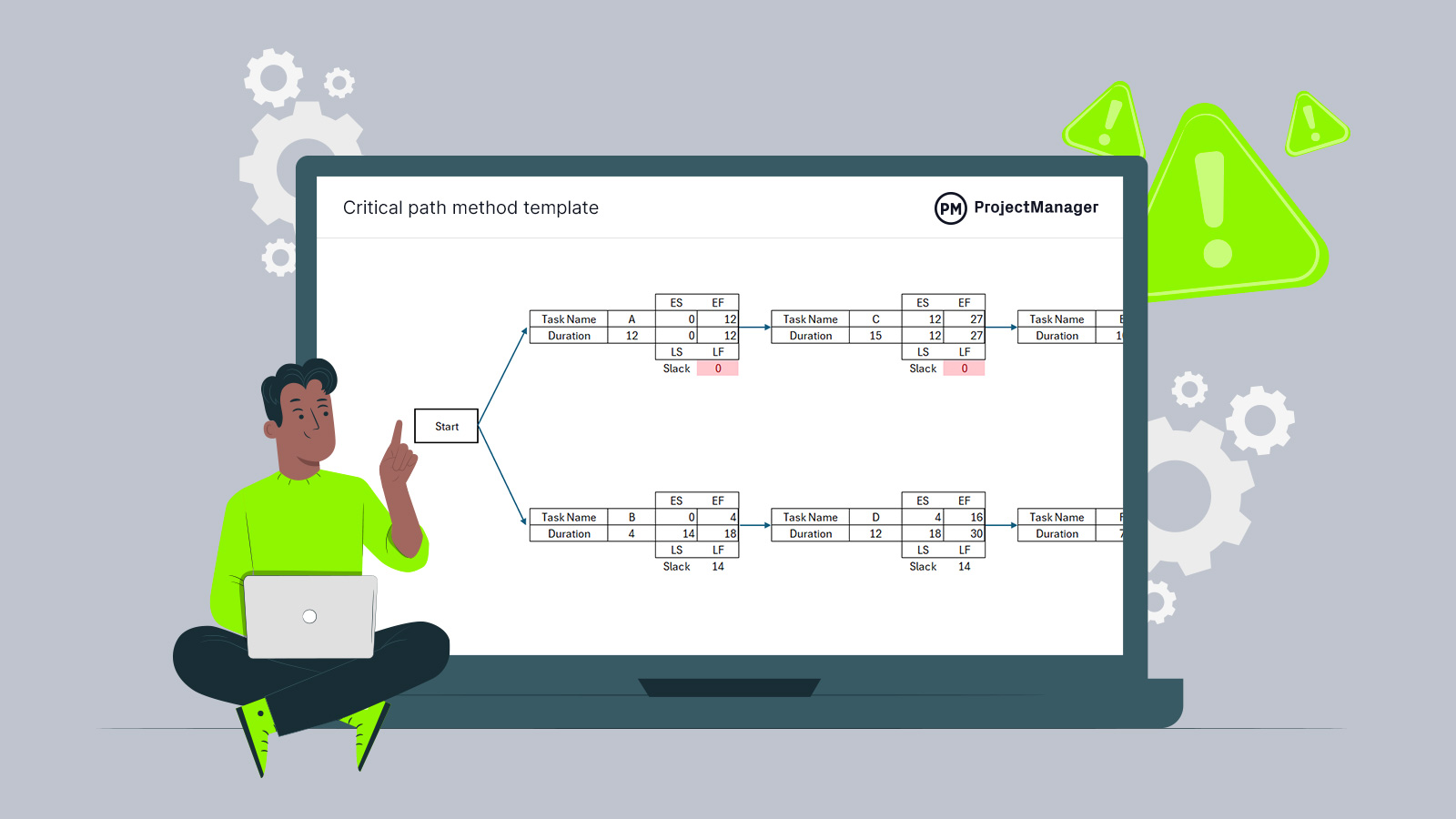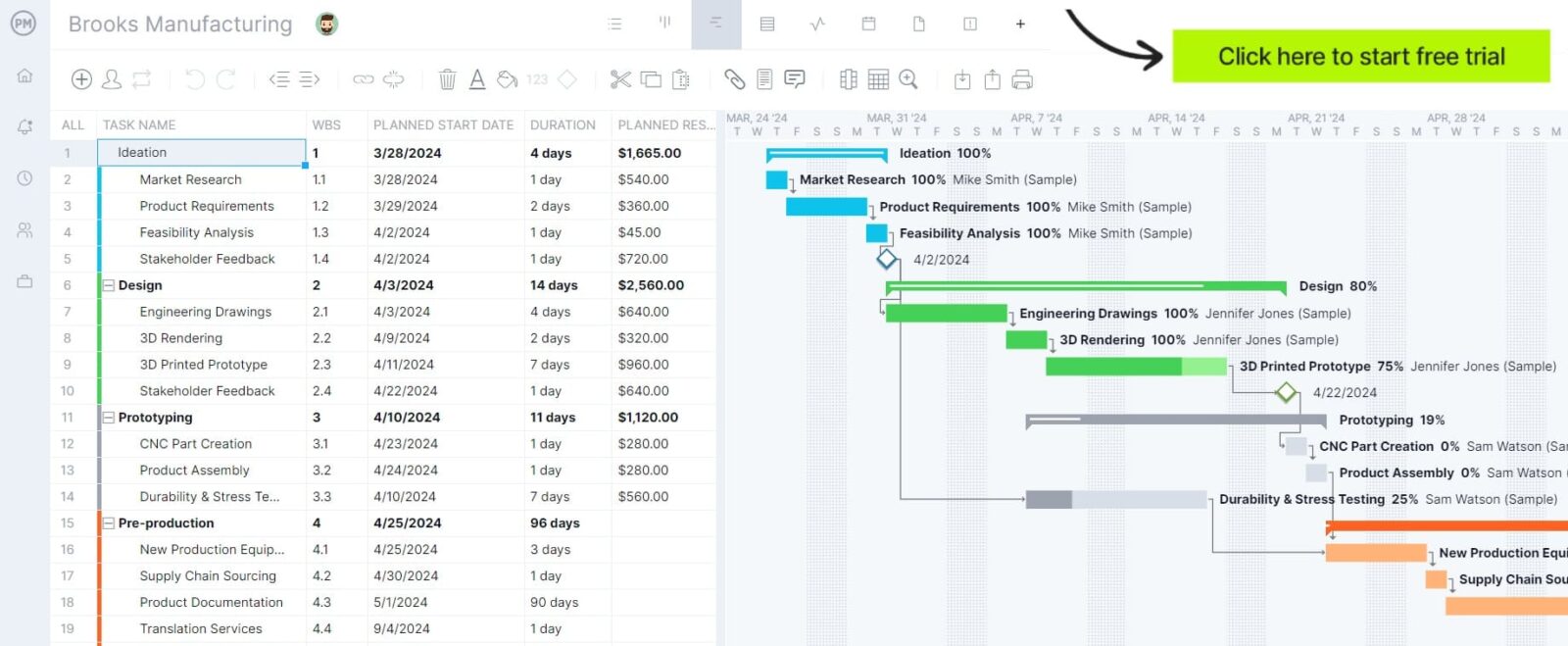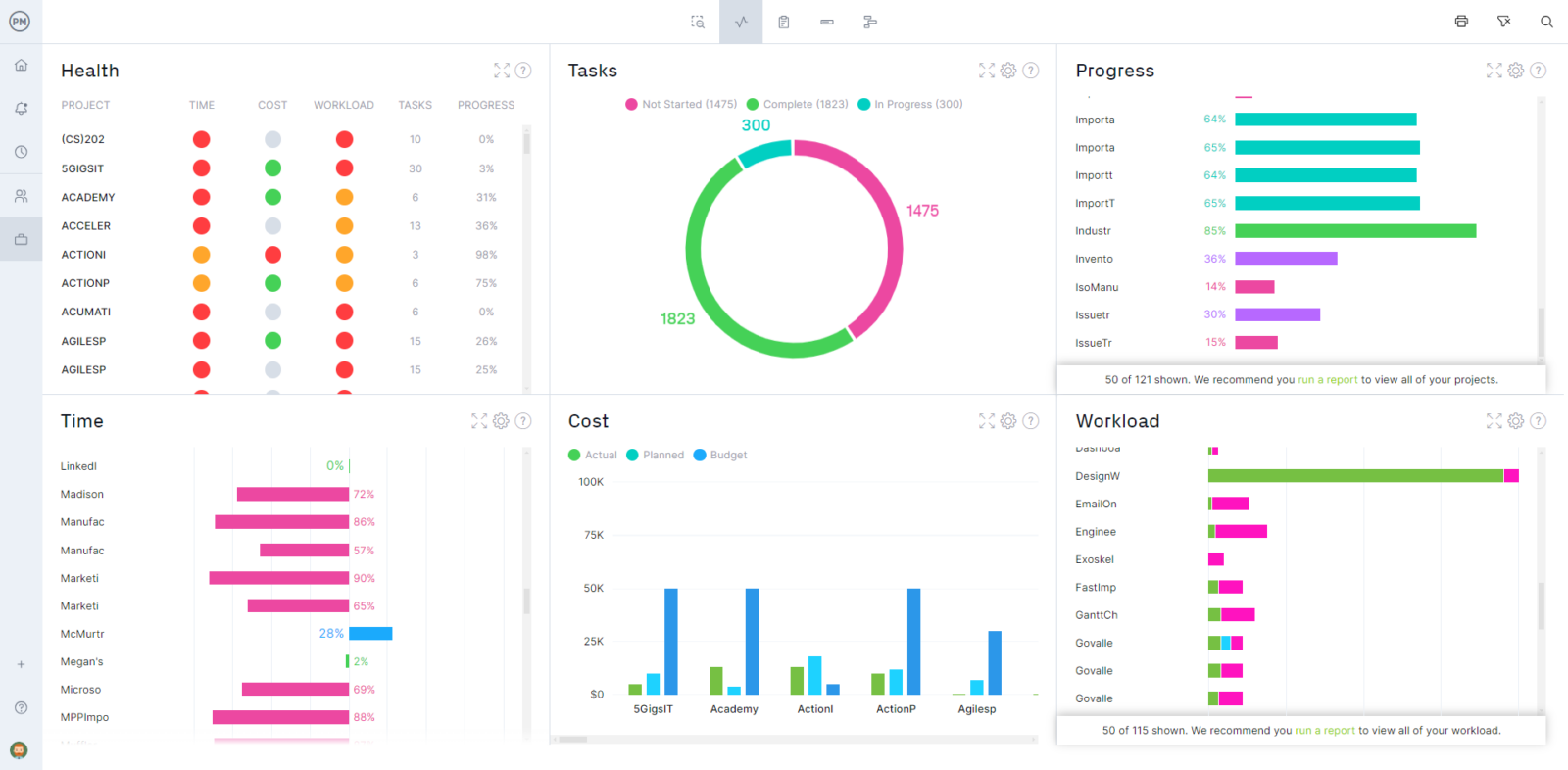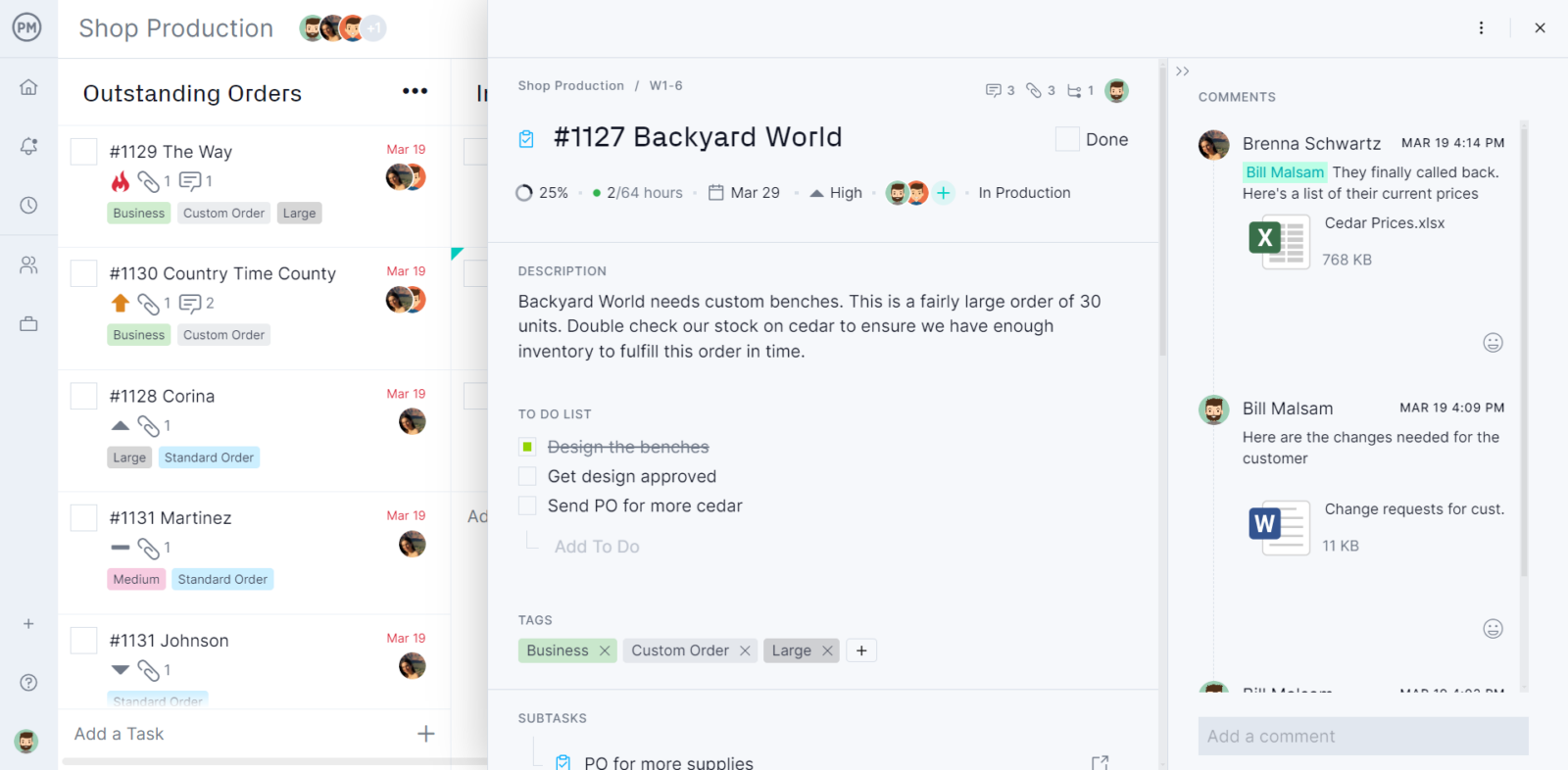Schedule compression techniques are used in project management to complete work faster than planned to speed up the delivery of the project.
There are two of these techniques, fast-tracking and project crashing. They’re commonly used to adjust the project schedule when falling behind, or when a project needs to be completed sooner than expected.
Read on to learn exactly how fast-tracking works and how it differs from other techniques in dealing with the project schedule and scope.
What Is Fast Tracking in Project Management?
Fast-tracking is a project schedule compression technique that consists of executing project tasks simultaneously instead of sequentially to complete them faster. This helps teams complete project tasks faster than was initially planned in the project schedule, as a contingency plan when they’re behind schedule.
However, some project tasks depend on others and cannot start until their preceding activity is completed. However, if project activities don’t overlap, then fast-tracking is a viable alternative, as it usually doesn’t add any extra costs, unlike project crashing, which speeds up the completion of tasks by using additional resources such as labor, machinery or equipment.

Get your free
Critical Path Template
Use this free Critical Path Template to manage your projects better.
Get the Template
That said, rearranging activities in your project to fast-track them can increase risk. Because you’re now executing all activities at once, project managers might have to rework the project. If not planned thoroughly, project fast-tracking could increase the chances of risks which could push the final deadline further out.
Whichever schedule compression technique is used, controlling the schedule, especially manipulating it to get done quickly, requires project management software. Most scheduling for projects is done on a Gantt chart.
ProjectManager has an interactive Gantt chart that can be used to make a detailed project schedule that allows you to assign tasks to team members, allocate resources, track costs, identify task dependencies, find the critical path and much more. You can also fast-track project schedules by simply dragging and dropping tasks in the visual timeline to adjust their due dates and duration. Try ProjectManager today for free.

When to Fast-Track a Project Schedule
When fast-tracking a project schedule, first ask five questions. If you answer yes to the following, then it means the project can be fast-tracked:
- Are all the tasks in the project scope properly reflected in the project schedule?
- Have project task dependencies been identified?
- Can you define the project resource requirements, objectives and priorities?
- Are you working well with stakeholders?
- Does the project have governance, oversight and problem management?
How to Fast-Track a Project Schedule
Once you’ve determined that the project can benefit from fast-tracking, then it’s time to follow these steps.
- The first step is to define the goals and capabilities when fast-tracking. You can’t move forward without a clear picture of your capabilities and an understanding of the project goal.
- Next, identify any task dependencies in the project. You can’t work parallel if tasks must finish or begin before another can stop or start.
- Then, look over the project schedule and see where there are opportunities to fast-track, such as the activities that can be done simultaneously without negatively impacting the project.
- Note all the viable alternatives to the schedule. What can be adjusted and what can’t change?
- With those alternatives in mind, start deciding on the project schedule and what can be fast-tracked and what cannot.
- These decisions shouldn’t be made in a vacuum. Seek consensus from the team and stakeholders before moving forward. Get buy-in and make sure everyone is on the same page before starting.
- Finally, as in any project, monitor and track progress and performance. As issues arise, identify them and work swiftly to resolve them.
Fast Tracking Example
To better understand how the fast-tracking process works, let’s go over a real-life scenario. We’ll use ProjectManager to make a project schedule and fast-track it.
Imagine a residential construction contractor who has been hired to build a house. A construction agreement between the contractor and the project owner has been signed, which specifies a project scope of work and a due date for the completion of the project, which is expected to be delivered within a maximum of 10 months.
However, shortly after the beginning of the project execution, the wood suppliers began having shortage issues, affecting the contractor’s ability to procure this raw material.
This prevents the contractor from starting the project on time, which begins to affect the overall project timeline as days go by. Once the contractor can procure wood, the project can start, but now it’s time to implement a fast-tracking approach to get this delayed project back on track.
This is the original project schedule made using ProjectManager’s Gantt chart. Each task is represented with a bar, and their length depends on their duration. As shown in the image below, each task is meant to be completed sequentially, which means one task must be finished before the next can start.

That construction schedule must now be fast-tracked by executing tasks in parallel. This is possible for tasks that don’t have a dependency. For example, the wood framing, sheathing installation and wiring can be completed in parallel, with some tasks still starting slightly before others. The same is true for the insulation, drywall and interior work.
However, some tasks can’t be fast-tracked, such as roofing work, which can’t begin if the walls haven’t been built. Here’s what the compressed schedule looks like. Tasks are now closer to each other in the Gantt chart, which means the overall project timeline has been shortened.
Project Fast Tracking Templates
We’ve created over 100 free project management templates to help with all the stages of the project life cycle. Here are some that can help with project scheduling and fast-tracking.
Gantt Chart Template
This free Gantt chart template for Excel automatically generates a visual timeline that can fast-track a project schedule by adjusting the project tasks’ due dates and duration.
Task Tracker Template
Track the status, priority level, task dependencies and due dates of project tasks in a simple spreadsheet with this free task tracker template for Excel.
Resource Plan Template
Executing tasks in parallel requires careful planning to ensure that project resources such as labor or materials will be available when needed. This free template is ideal for scheduling the utilization of resources in a project calendar.
Benefits of Fast Tracking
Fast-tracking is not without its risks, which we’ll get to. In fact, fast-tracking will increase the chances of risks occurring. But there are benefits to fast-tracking—or project managers wouldn’t turn to it when they need to tighten up their schedules.
One of the reasons that project managers will fast-track a project is that it increases productivity in the scheduling resource utilization of the project. Of course, fast-track projects will help make up for lost time or complete the project sooner if that’s necessary.
You might need to end the project sooner than planned because of circumstances changing which make it impossible to keep to the original schedule. It will also allow for meeting specific priorities that might have been impossible with the original schedule.
What Are the Risks of Fast Tracking a Project?
Fast-tracking a project will increase risk—you’re no longer working in sequence, but all at once. Parallel work is harder to manage because you’re trying to control everything at once.
Also, when managing all the activities in a project at once, you still have to manage the triple constraint to deliver on the quality and scope and stay within the budget. That’s hard when you’re working one activity at a time and only becomes exponentially more difficult as you fast-track.
Fast-tracking requires extra planning because of the increased risk level. If you’re not careful, the project becomes too risky to attempt fast-tracking. Any benefits might be overshadowed by issues and problems that can sidetrack the project or worse.
What Is Project Crashing?
Project crashing is a technique wherein more resources are added to the project while attempting to keep costs low.
These cost and schedule changes are analyzed to get the maximum compression for the least cost to the project. However, crashing will add costs to the project because it involves increasing resources.
The analysis of cost and schedule tradeoffs is based on the lowest crash cost per unit of time. This gives teams insight into which activities have the most value while not racking up too much cost. The results of such analysis are shared as a crash graph. The crash graph shows activities that save the most time with the least increase in cost.
Project crashing is only viable when adding resources will complete the project sooner. The extra resources can include overtime, incentives and more. The additional costs of achieving this goal are reviewed.
Project Fast Tracking vs. Project Crashing
Schedule compression is used to shorten project duration. That can be achieved through two techniques, fast-tracking and project crashing. Both have their pros and cons, so let’s look at both and see how they compare.
Fast-tracking is executing project activities at the same time. Project crashing is adding resources. Therefore, both can help make up for lost time, but fast-tracking is not likely to impact the budget, while project crashing will require additional costs.
As noted, there is more risk associated with fast-tracking and more costs with a project crashing. These differences don’t make one better or worse than the other. They’re different and should be used for different reasons. In short, it depends on the project.
If you choose fast-tracking the project, be sure to keep those activities in parallel to those that are on the critical path. If the critical path cannot be made shorter, then there’s no chance to shorten the project’s duration.
How Can Project Management Software Help With Fast Tracking?
Planning is key to successful fast-tracking in project management. In addition to planning, you must monitor and track the project closely to identify risks when they arise and resolve them quickly. ProjectManager is online project management software that provides real-time data to make better decisions to keep projects on track.
Track Key Project Metrics on Dashboards
We’ve already explained how to plan fast-tracking on our Gantt chart, which filters for the critical path, but once the schedule is fast-tracked, make sure it goes according to plan. That’s where our real-time dashboard comes in. Unlike other tools, our dashboard doesn’t have to be configured. It’s ready to go, automatically collecting and calculating live data that displays in easy-to-read charts and graphs. It’s like an instant status report whenever you need it.

Multiple Project Views for Flexibility
Teams need to execute all activities at once, but it’s unlikely they’ll want to use a Gantt chart. Our multiple project views allow teams to work how they want. With robust task lists, kanban boards that visualize workflow or a calendar that keeps important dates front and center, teams can work how they want. All data is updated simultaneously across every tool so everyone is working on the most current data. This is especially helpful for teams who might work in different locations.

Generate Instant Reports
Our collaborative platform keeps teams connected and productive, but stakeholders also require updates. They’re not going to need the same granular information teams need to execute activities, which is why ProjectManager’s reporting feature can be filtered to show just the data stakeholders want to see. Get reports on costs, tasks, workload and more. They’re all easy to share with stakeholders whether they want a PDF or printout.

ProjectManager is award-winning project scheduling software that organizes work to keep you productive and organized. Control your schedule with Gantt charts, monitor in real-time and easily reallocate resources to help you fast-track your projects and get them in early without substituting quality or breaking your budget. Try ProjectManager today for free!

